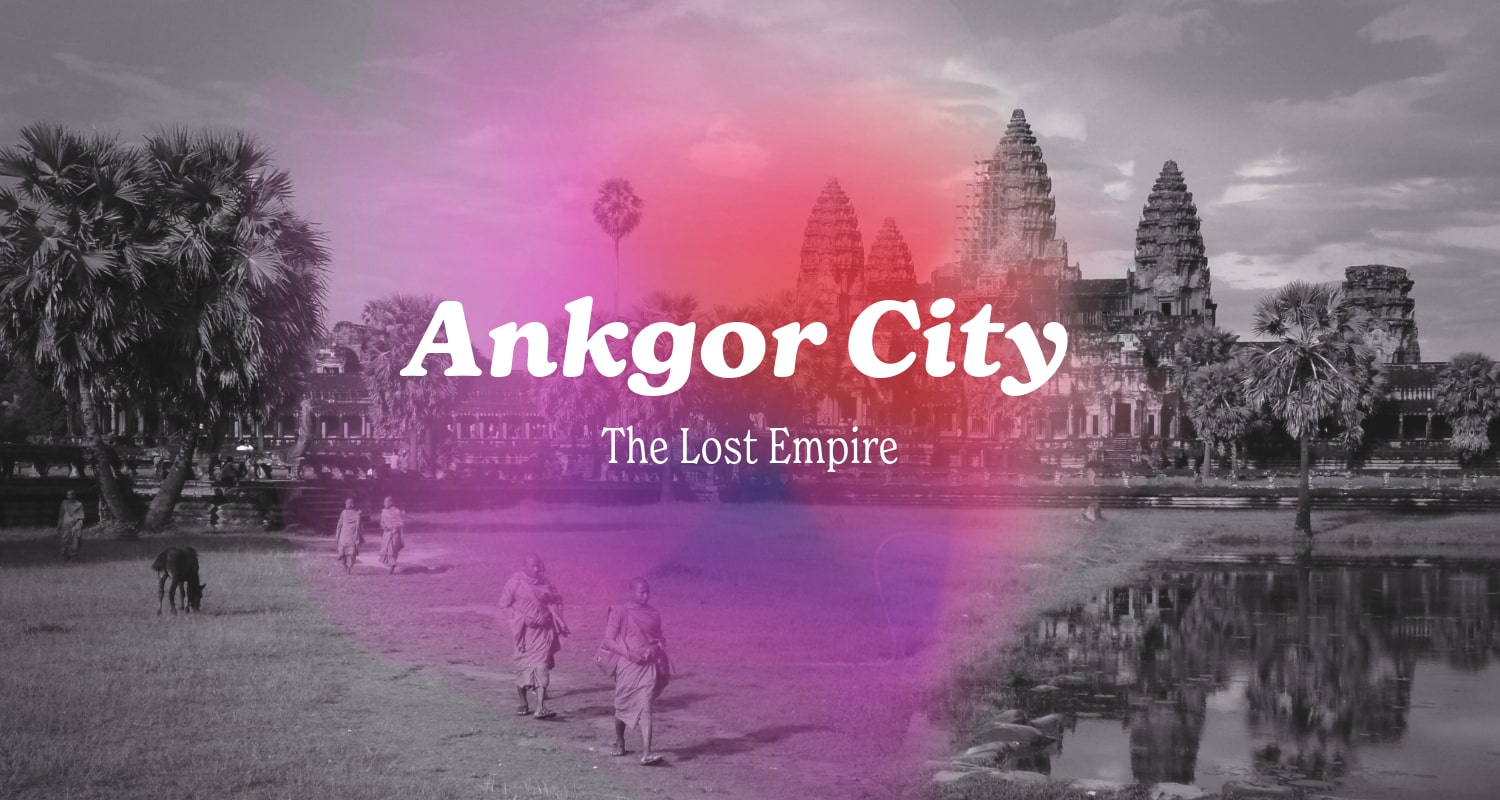Hidden deep within the lush jungles of Cambodia, just 6 kilometers north of today’s bustling town of Siem Reap, lies the ruins of ancient city of Angkor, once the magnificent capital of the Khmer Empire. Spanning from the 9th to the 15th centuries, this empire was one of Southeast Asia’s most powerful civilizations — and Angkor was its crown jewel.

The Angkor Empire was established in this forested area of Cambodia and experienced its golden age between the 10th and 13th centuries.
The most significant legacy they left behind is the Angkor Temples. Almost all the temples have remained hidden in the jungle for about 600 years.
Angkor, which spreads over an area of more than a hundred kilometers, is home to nearly two hundred monumental structures where the reflections of the Khmers’ Hindu and Buddhist beliefs can be easily seen. Since the palaces and houses in the city were made of wood, the only structures that have survived to the present day are the stone temples.
The Rise of a Sacred City
The foundation of Angkor is tied to a legendary figure: King Jayavarman II, who declared himself a God-King (Devaraja) in 802 AD. This bold move not only unified the Khmer people but also transformed Angkor into a spiritual and political center that would thrive for centuries.

At its peak, Angkor was a sprawling metropolis with over a million inhabitants, making it one of the largest pre-industrial cities in the world. The city stretched across more than 1,000 square kilometers, with a sophisticated water management system of reservoirs, canals, and moats — a testament to the Khmer’s advanced engineering skills.
The architectural marvels of Angkor Wat—built by King Suryavarman II in the 12th century—and Angkor Thom, commissioned by Jayavarman VII around 1200, still stand today as some of the greatest legacies of Khmer craftsmanship. These temple complexes, carved with celestial dancers and mythological tales, continue to captivate millions of visitors each year.
A Fusion of Faith and Power
Angkor’s architecture reflects a dynamic interplay between Hinduism and Buddhism, the two dominant religions of the empire. Massive stone temples, intricately carved with divine beings, celestial dancers, and epic mythologies, rise from the forest floor — silent witnesses to centuries of devotion and grandeur.
One of the most fascinating aspects of Angkor’s evolution is how it adapted with time. While early rulers like Jayavarman II and Suryavarman II leaned into Hindu traditions, later kings such as Jayavarman VII embraced Mahayana Buddhism, leaving behind temples that reflected this spiritual shift.

Decline and Rediscovery
By the 15th century, Angkor began to decline, likely due to a combination of climate change, overpopulation, and foreign invasions, particularly from the Siamese. The once-bustling capital was gradually reclaimed by the jungle, forgotten by the world for centuries. While most of the city faded into obscurity, Angkor Wat remained an active religious site, protected and preserved by Theravada Buddhist monks, and eventually becoming one of the most significant pilgrimage destinations in Southeast Asia.
Despite its physical isolation, Angkor was never entirely forgotten. During the French colonial era in the 19th century, curiosity about the “lost city” grew rapidly. French explorers, scholars, and archaeologists—particularly through the École Française d’Extrême-Orient—led extensive excavations and restoration projects. Their efforts not only unearthed forgotten temples, canals, and sacred sculptures but also helped reconstruct a clearer understanding of Angkor’s intricate religious and political systems. French explorer Henri Mouhot‘s writings compared Angkor to the wonders of Ancient Greece and Rome, igniting global fascination.
Today, thanks to over a century of archaeological work, Angkor is recognized as a UNESCO World Heritage Site and a symbol of Cambodian identity and pride.
* In the 1950s, French artist Maurice Fiévet and his wife, photographer Jeannette, created dramatic paintings that depicted life in ancient Cambodia.
 References
References
Encyclopaedia Britannica – Angkor: Archaeological interest and preservation issues
https://www.britannica.com/place/Angkor/Archaeological-interest-and-preservation-issues
Coe, Michael D. – Angkor and the Khmer Civilization
Thames & Hudson, 2003.
A comprehensive guide to the rise and fall of Angkor, blending archaeology and history.
Glaize, Maurice – The Monuments of the Angkor Group
Originally published by École Française d’Extrême-Orient, updated editions available online.
An essential resource for understanding temple architecture and layout.
UNESCO World Heritage Centre – Angkor
https://whc.unesco.org/en/list/668
Official UNESCO listing with detailed information on preservation efforts and historical significance.
Jacques, Claude, and Freeman, Michael – Ancient Angkor
River Books, 2003.
A richly illustrated volume offering deep insights into the major temples and the Khmer Empire’s religious ideology.
Higham, Charles – The Civilization of Angkor
University of California Press, 2001.
Offers a broader look at Southeast Asian civilization with Angkor at the center.
